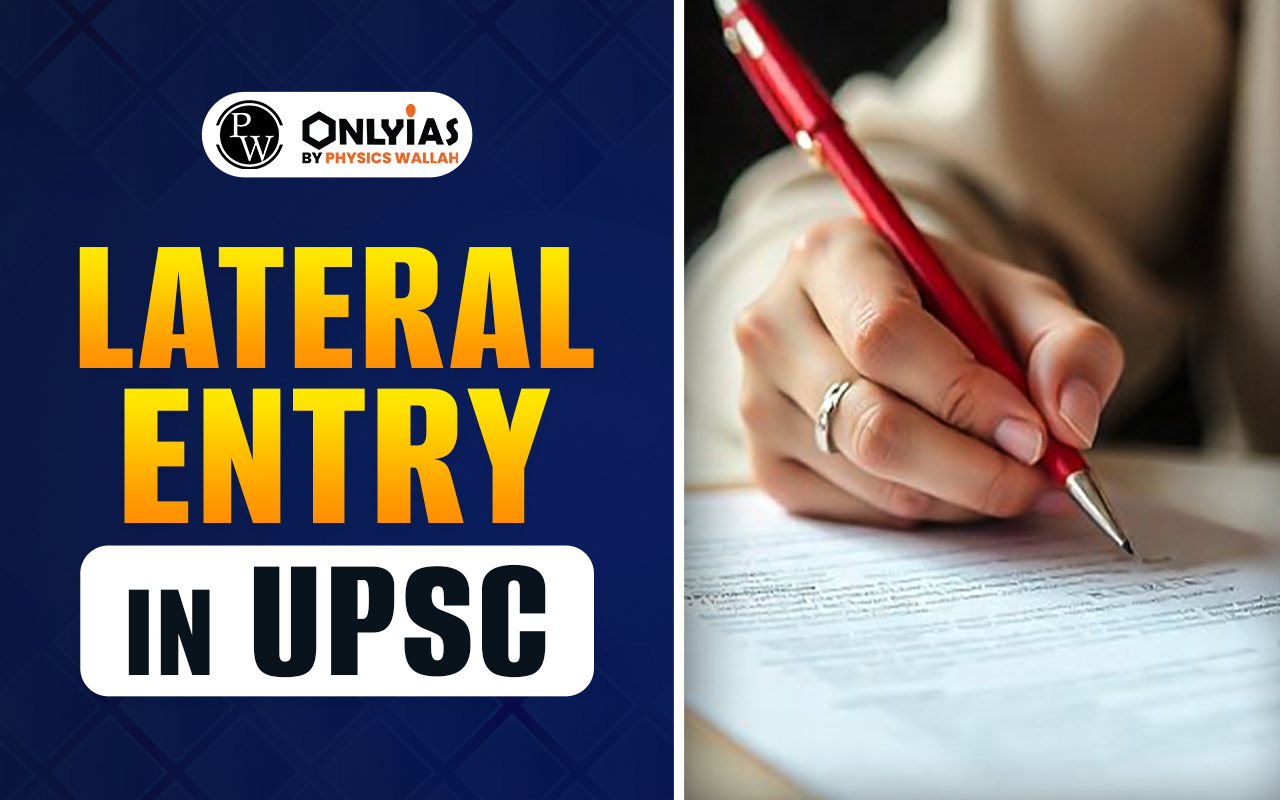Lateral Entry in UPSC allows experts from outside the civil services to join senior government roles like Joint Secretary or Director. Introduced in 2018, it aims to bring domain expertise and fresh perspectives into governance. While it enhances efficiency and innovation, it also raises concerns over accountability, reservation, and integration into traditional bureaucratic structures.

Lateral Entry in UPSC was introduced in 2018, when the Government of India, through the Department of Personnel and Training (DoPT), made this announcement. This allowed professionals from outside the traditional civil service route to join at senior levels, such as Joint Secretary and Director.
The purpose behind introducing Lateral Entry in UPSC was simple: to bring in domain expertise, fresh thinking, and specialized knowledge into governance. Since its implementation, multiple rounds of recruitment have been carried out through the Union Public Service Commission. As of the year 2025, candidates of lateral entry are serving in ministries like Finance, Agriculture, and Rural Development, etc. Here, we provide a complete, detailed insight into the Lateral Entry in UPSC and its related aspects.
Lateral Entry in UPSC means the appointment of individuals from non-civil services backgrounds into government positions. These are usually middle or senior-level posts, often at the Joint Secretary or Director level. Instead of going through the regular civil services examination, candidates are chosen based on their professional achievements, domain expertise, and experience. Most lateral entry appointments are at:
Enroll now for UPSC Online Course
The idea of lateral entry in UPSC is not entirely new. While it gained momentum after 2017, earlier governments had also experimented with appointing professionals in advisory roles. The structured system evolved gradually. Check the table below for detailed information on the same:
| Year / Period | Event / Milestone | Explanation (25–30 words, short sentences) |
| Early Years | Occasional specialist appointments | India occasionally appointed advisers and domain specialists. These were limited cases. There was no structured recruitment. |
| 2017 | NITI Aayog Recommendation | NITI Aayog strongly recommended lateral entry. It highlighted gaps in expertise and suggested bringing private sector talent into government. |
| 2018 | First Notification | DoPT released its first notification for 10 Joint Secretary posts. UPSC handled the recruitment to ensure transparency. |
| 2019 & 2021 | Additional Batches | Director and Deputy Secretary-level posts were added. Professionals from diverse fields joined on fixed-term contracts. |
| 2025 | Current Status | Lateral entry continues as a structured practice. Dozens of professionals serve in ministries. Tenures usually range from 3–5 years. |
The process of lateral entry in the civil services UPSC is structured and involves several stages to ensure fairness. Provided here is the gist of the process that candidates need to keep track of:
Enroll now for UPSC Online Course
The salary of UPSC lateral entry officers matches that of career civil servants of the same rank. This maintains parity and avoids service inequalities. Check the table below to know the salary of UPSC lateral entry:
| Position | Pay Level | Salary Range (₹) | Benefits |
| Joint Secretary | Level 14 | 1,44,200 – 2,18,200 | Housing, TA, HRA, Medical, Official Car |
| Director | Level 13A | 1,31,100 – 2,16,600 | Pension, Leave, Medical, Allowances |
| Deputy Secretary | Level 12 | 78,800 – 2,09,200 | Housing, Perks, Travel Allowance |
Mentioned here are some of the advantages and disadvantages of the lateral entry in civil services. Get the complete detailed information on these major aspects:
The following are the key advantages of lateral entry in civil services. These points highlight how it strengthens governance and administration.
Enroll now for UPSC Online Course
| UPSC Mains Question: What are the potential benefits and drawbacks of allowing lateral entry of external domain experts into the civil services at senior levels? Discuss with suitable examples. (250 words, 15 Marks) |
The following are the main disadvantages of lateral entry in civil services. These points explain the challenges and risks associated with the system.
Ready to boost your UPSC 2026 preparation? Join PW’s UPSC online courses today!
It is the recruitment of professionals from outside civil services into senior government posts.
Lateral entry was formally introduced in 2018 through DoPT notifications for Joint Secretary-level posts.
Professionals from private sector, academia, and public institutions with relevant experience and expertise can apply.
Their pay matches equivalent civil service officers, ranging from ₹78,800 to ₹2,18,200 per month with allowances.
It brings expertise, innovation, and efficiency but faces challenges like accountability gaps, short-term contracts, and adjustment issues.
<div class="new-fform">
</div>
